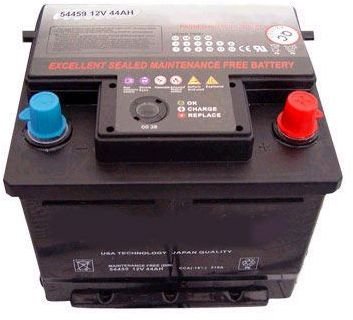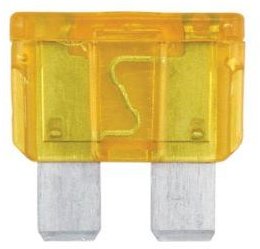Car Audio Help - How to Troubleshoot an Amplifier and Subwoofer - Check Power and Ground
Car Audio Problems - No Sound
I recently had some problems with the amplifier and subwoofer in my truck, but I was able to fix it after trying a variety of things. In this article, I’ll go over what all I checked in order to isolate the problem and get my stereo system working again. This is how to troubleshoot a car amplifier and subwoofer or speakers.
I have a powered subwoofer made by Infinity. It’s a large box that contains both a 10” subwoofer and an internal amplifier. The problem I kept having was that the unit would randomly stop working. The red power light was on, but no matter what I adjusted it would sometimes play just fine and other times nothing would happen at all.
No matter what brand amplifier you have, they all work basically the same way in that they require a power source direct from the battery, a ground wire direct to the chassis, an audio input from the car audio head unit, and an output to speakers and/or a subwoofer. If any of those four requirements are not met, your amplifier is not going to work and you won’t get any sound.
Check the Power

The first thing you should check is the power. In my case, the red power light was coming on so the unit had to be getting juice from somewhere. I have a new battery and my vehicle always starts fine, so I didn’t think it was a battery problem. If your car battery is getting old and especially if it seems sluggish in really cold weather, you may consider buying a new battery if your amp is having trouble.
A properly wired amplifier should include an in-line fuse on the cable that runs from the positive post on the battery to the amp’s main power input. This is to prevent the amp from being overloaded or ‘blown’ and will save you a lot of trouble in the long run. I checked the fuse on my cable and found it to be intact although there was some black charred marks on the connectors.
Before you unhook any cables from your amplifier, make sure you disconnect that in-line fuse. Otherwise, you’ll be holding a hot wire going straight to the battery and it can be dangerous, especially if it accidentally touches any other metal inside the vehicle. I know this from experience.
After checking the fuse and connections, my amp and subwoofer still didn’t work, although the light showed that it was getting power.
Check the Ground
Improper grounding is one of the main causes for an amplifier not working properly. The most common place that people ground the amp is by running a wire to one of the bolts that holds down the front seat. That’s how I have it wired in my truck. What’s most important is for that wire to make good contact with the metal. Often times a lot of paint can interfere with the connection, and it is recommended that you wire brush away any paint to expose metal where the ground wire is connecting. I did this on mine, but in a way that was not at all conspicuous once I put everything back in place. Be careful not to scratch up the inside of your car.
After checking the ground, my amp and subwoofer still didn’t work.
Check the Inputs

I went to all the trouble of taking apart my dashboard and getting out my stereo so I could look at the connections on the back to make sure everything was in place. After all that work, I was hoping to find a loose cable that I could push back in. Unfortunately, everything was tight and secure. When I installed the stereo over a year ago, I bought crimpers for properly doing all the wiring because electrical tape gets sticky and nasty over time. I actually tugged on all my cables to make sure they were fine. My stereo has a set of RCA cables that run directly to the amp, as is the most common way of sending the audio to the amplifier, and so I unplugged and replugged them just to make sure. I also visually inspected the cable from one end to the other to make sure it hadn’t been cut or damaged.
I still got no sound from my subwoofer after all that.
Check the Outputs
Because my amp and subwoofer are all one unit, I had no outputs to check. I debated opening up the casing and looking at the wires inside, but it was all still under warranty and I didn’t want to risk voiding it. I was convinced that the problem had to do with my wiring or power, but couldn’t prove otherwise. On your own stereo, make sure you don’t have your speaker wires crossed anywhere, as it is very easy in all the confusing mass of wires to actually hook a connection back onto itself. You should have a pair of wires going directly from the amp to each speaker you wish to push. Also make sure that your speaker wires aren’t tangled up in the power cables, as this can cause interference. Check the wires to make sure they don’t have any cuts in them, too.
Problem Solved

After I checked everything multiple times and the problem did not go away, I decided to try something new. I had noticed before some black charring on the in-line fuse for the power cable. The fuse was still intact and I didn’t think it would make any difference, but 20 amp fuses are very cheap and I decided to swap it out for a clean one. Wouldn’t you know that was the cause of my problem? I don’t know why it had the black charring on the fuse, but it must’ve been enough to keep the prongs from making a good connection and that’s why my system seemed to randomly work. Ever since I swapped out once good but dirty fuse for another good and clean one, my system has worked fine every time I start the vehicle.
